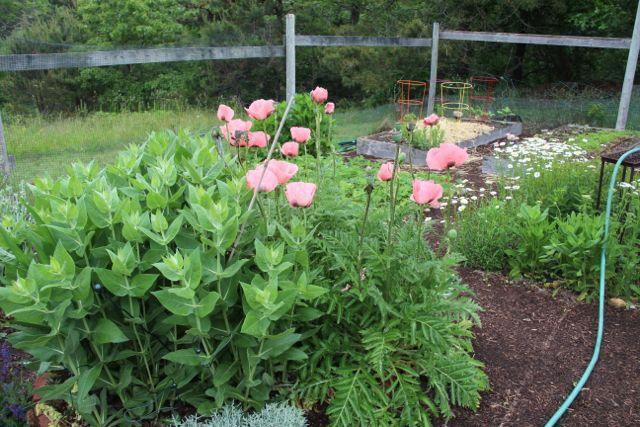Is there such a thing as a free lunch?

For me, one of the great pleasures of spring, besides finally getting warm, is scouring the garden for the elegant “freebies;” the unexpected, or at least random, treats I can gather for an early spring addition to lunch, breakfast or dinner. I’m talking about the perennials, biennials and self-seeded annuals that come back to greet me – flowers and herbs like echinacea and thyme, chives and phlox, parsley and Asian poppies. I love and appreciate their sturdy perseverance and dependability, but it’s the surprises I get excited about. Where are those pioneering volunteers in unexpected places? And what can I harvest without having done any work at all?
Let’s define some terms that you may see on our seed packets and descriptions:
Perennial
A plant whose roots overwinter and which appears year after year in the same place. Think echinacea, rhubarb, asparagus.
Biennial
A plant that overwinters once, sets seed in the second year and then dies. Think parsley, sweet william, and carrots.
Self-seeding Annual
A plant that propagates by going to seed, dying and reappearing the next year as a new plant. Think Black-eyed Susan and many other flowers, some tomatoes and many annual herbs.

Volunteers
These are self-seeding plants that appear, either unexpectedly (maybe a bird carried seed from a neighbors garden), or in unexpected places (a different part of the garden from where its parent plant was located).
Volunteer of the Year!

In my garden, cilantro – the seed of which is the spice coriander – claims volunteer of the year award. Cilantro can be counted on to reappear in abundance. For those of us who don’t think it tastes like soap (a sad but not uncommon affliction), it can be used as herb and flower, leaf and seed, fresh and dried, to spice up salads, soups, salsas and sandwiches!

My favorite use of cilantro in the early spring is in a cheese sandwich. It’s great later in the season with fresh veggies, or in all kinds of Mexican and Asian recipes, but before those veggies arrive, try cilantro with cheese.
Other Garden Volunteers
Lambsquarters:

What can there be a less assuming green than lambsquarters? Looking like the “weed” they are, lambsquarters arrive just in time to be tossed into a salad or lightly braised with some sturdier greens. With a very mild taste, they are pretty innocuous to even the most resistant palates. And if your garden is lacking in Lambsquarters, plant some Magenta Spreen: a variety of lambsquarters with beautiful magenta leaves. Beautiful, nutritious and very easy to recognize, once planted, they’ll come back year after year to beautify your garden and feed your family!
Purslane:

For a heartier green, I look forward to purslane. I doubt I could get rid of it in the garden if I wanted to. But I don’t want to! My grandmother served a feed of purslane at least once a week throughout the growing season. She generally cooked it up with bacon or butter, but I tend to switch out the bacon for some other salty taste like feta cheese and I serve it with a sprinkle of lemon.
Johnny Jump-up:
 One of my favorite edible flowers, Johnny Jump-up, can turn up anywhere in the garden. They make me smile every time I see their tiny sweet faces. Added to salads, as a garnish for almost anything, or sitting in a tiny vase on the kitchen counter, there’s something about the randomness of their appearance and their fear of heat, that makes them a special treat when they appear in the cool weather of early spring.
One of my favorite edible flowers, Johnny Jump-up, can turn up anywhere in the garden. They make me smile every time I see their tiny sweet faces. Added to salads, as a garnish for almost anything, or sitting in a tiny vase on the kitchen counter, there’s something about the randomness of their appearance and their fear of heat, that makes them a special treat when they appear in the cool weather of early spring.
I could go on! But let me leave you with a suggestion: if you’re beginning a garden, consider planting herbs and flowers that will return next year to offer you the ease and joy of eating from your garden in March. And, if you’re already experienced, consider letting go of the perfect plan, and welcoming the volunteers! They’re free!



